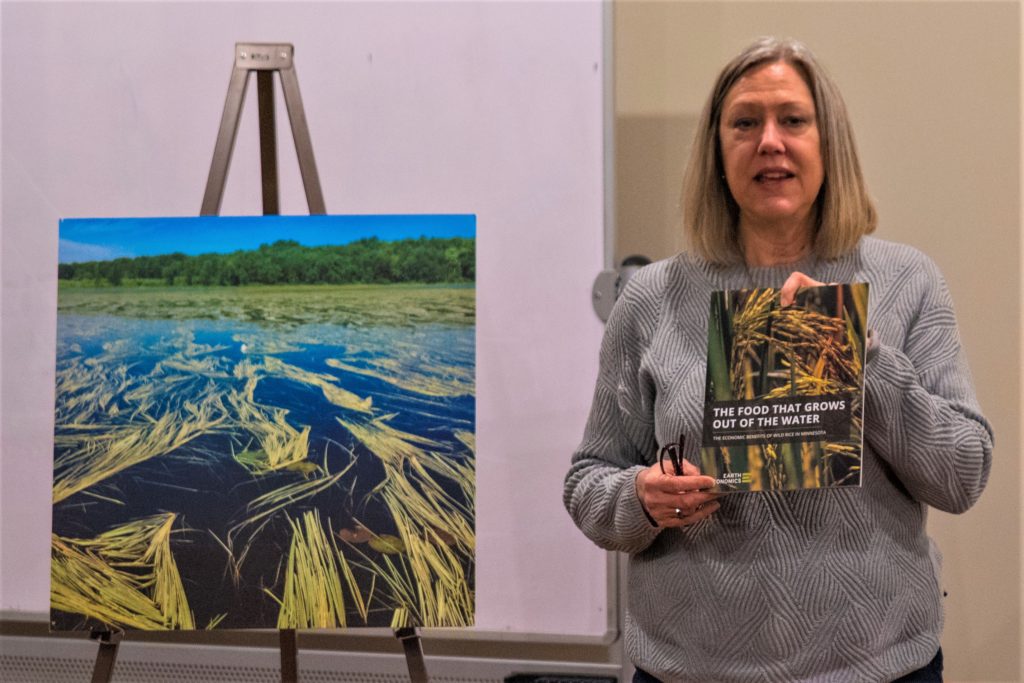
Nancy Schuldt holds a copy of the health impact assessment document the Fond du Lac Tribe commissioned. Image by Michael Anderson.
By Elise Ertl, University of Wisconsin-Superior
Nancy Schuldt delivered her River Talk, “Promoting Tribal Health by Protecting and Restoring Manoomin (Wild Rice) in the St. Louis River and Beyond,” on Feb. 12, stressing the importance of manoomin’s presence in the St. Louis River and the benefits it creates in health, wellness and wealth.
Schuldt, the water protection coordinator with the Fond du Lac Band of Lake Superior Chippewa, began by noting how the tribe approached the manoomin decline. “Science simply just isn’t enough. You need policy and reform, and to start that, we decided it was best to conduct a health impact assessment.”
Manoomin provides many health benefits physically, economically and socially. Wild rice is packed with fiber and protein, measuring much higher than white and brown rice. The harvesting of wild rice, an important tradition in Native American culture, also provides a great deal of physical exercise that adds to the health benefits of wild rice. Schuldt said that economically, the manoomin harvest adds more than $20 million to the state economy each year and supports nearly 300 jobs. The growth of wild rice also promotes increased duck populations, which in turn promotes duck hunting for economic profit.
After focusing on the benefits that wild rice supports, Schuldt described what wild rice needs to grow properly and abundantly. She used a quote that was shared by a concerned tribal member, which read, “Water is necessary for not just wild rice but us as well. It has to be clean.”
Good water quality and habitat are vital to the survival of this annual grass. Sulfate is one component being investigated because of its observed effects on wild rice. Schuldt said they are pushing for enforcing the state’s existing 10-ppm maximum of sulfate in the water, which the Band also has in its approved water quality standards. However, this can be a tough goal to achieve due to cost factors that arise for companies and wastewater treatment plants in treating their effluent. A lot of emphasis has been put on costs for the companies, but Schuldt believes the benefits of wild rice outweigh the costs.
A member of the audience asked why the water body sulfate specific standards were so important when cultivating wild rice. Schuldt delved deeper into the subject by explaining how sulfate turns into sulfide in the sediments surrounding the roots of the wild rice, which, over time, becomes toxic. The seeds then become less abundant and smaller, meaning less rice grows as the sulfide accumulates.
The next River Talk will be held at 6:30 p.m. on March 3 in conjunction with the St. Louis River Summit at the Duluth Entertainment and Convention Center. The topic will be “Akinomaage: Teaching from the Earth,” presented by photographer and Fond du Lac tribal member Vern Northrup. He will discuss how he uses photography as a tool to educate both himself and viewers about the rhythms of nature, the preservation of tradition, and the relationship between resilience and sustainability.


